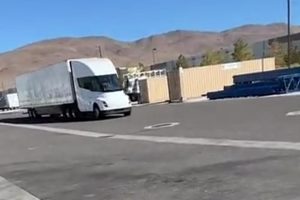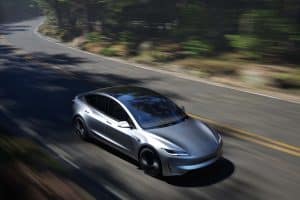- 🚗 General Motors (GM) is suing San Francisco, seeking a refund of over $108 million in Cruise taxes.
- 💸 GM alleges unfair taxation, claiming that San Francisco linked Cruise’s taxes to GM’s global revenue over a seven-year period.
- 🌐 The city’s approach resulted in more than $3 billion of GM’s revenue becoming subject to San Francisco taxes, despite GM asserting Cruise’s independence.
- 🏢 GM argues it should be exempt from the tax since Cruise generated minimal revenue in the last year.
- 💼 GM emphasizes its limited physical presence in San Francisco, with no plants, dealerships, or significant retail operations.
- 💰 In addition to the $108 million refund, GM seeks the recovery of $13 million in interest and penalties.
- 📉 Cruise, GM’s self-driving unit, has faced challenges, including the revocation of its license and investigations following an October accident involving a pedestrian.
- 🚗 Cruise’s plans for test vehicles and production of the Cruise Origin self-driving van were halted, with executive resignations and a significant staff reduction.
- 🔄 The case is under review by San Francisco, with the city indicating it will respond in court.
- 🌐 The legal battle adds to Cruise’s recent setbacks, including the October accident, license revocation, and operational challenges.
In a recent turn of events, General Motors (GM) finds itself entangled in a legal battle with the city of San Francisco, seeking a refund exceeding $108 million in taxes related to its self-driving unit, Cruise. This clash reveals intricate complexities in the taxation landscape, autonomy challenges, and the evolving dynamics of the automotive industry. Let’s delve into the nuances of this dispute and its broader implications.
Unraveling the Lawsuit: GM vs. San Francisco
General Motors is taking legal action against San Francisco, alleging that the city unjustly imposed taxes by intricately tying Cruise’s finances to GM’s global revenue over a seven-year span. Here’s a breakdown of the key elements:
1. Financial Fallout
- GM contends that San Francisco’s tax approach led to over $3 billion of its revenue falling under the city’s taxation umbrella. This substantial amount raises eyebrows and questions about the fairness of the taxation methodology.
2. Autonomy Independence
- Despite GM asserting Cruise’s autonomy and independence, the city’s tax strategy appears to blur the lines between the parent company and its self-driving subsidiary. This prompts reflections on how jurisdictions grapple with taxing emerging technologies.
3. Revenue Rationalization
- GM argues for exemption from the tax burden, emphasizing that Cruise’s revenue remained modest in the preceding year. This highlights the challenges in aligning taxation with the financial realities of innovative ventures, particularly in their nascent stages.
4. Physical Presence Emphasis
- The automaker underscores its limited physical footprint in San Francisco, noting the absence of plants, dealerships, or significant retail operations. This aspect challenges the traditional notion of taxation tied to physical infrastructure.
5. Financial Reckoning
- Seeking not just a refund but a comprehensive financial reckoning, GM aims to recover $13 million in interest and penalties. This underscores the broader financial implications and repercussions associated with the dispute.
Cruise’s Troubles: Beyond the Courtroom Drama
The lawsuit is just one chapter in a larger narrative of challenges faced by GM’s self-driving unit, Cruise. This section explores the multifaceted issues surrounding Cruise’s recent endeavors:
1. Operational Halts
- Following an unfortunate October incident involving a pedestrian and a Cruise vehicle, the California Department of Motor Vehicles revoked Cruise’s license for operating driverless vehicles. This prompted immediate halts in operational plans and a reevaluation of safety protocols.
2. Corporate Upheaval
- The aftermath of the incident saw significant corporate restructuring, with the resignation of former CEO Kyle Vogt and other executives. The termination of nine project leaders added to a broader 24-percent reduction in staff, signaling a turbulent period for Cruise.
3. Product Stalls
- Cruise’s ambitious plans for test vehicles and the production of the Cruise Origin self-driving van were abruptly put on hold. This raises questions about the viability and readiness of self-driving technology for widespread adoption.
The Road Ahead: Implications and Reflections
As this legal drama unfolds, it prompts broader reflections on the intersection of technology, taxation, and the autonomy race within the automotive sector:
1. Legal Precedents
- The outcome of GM’s lawsuit could set crucial legal precedents for the taxation of autonomous vehicles, influencing how jurisdictions approach the financial aspects of emerging technologies.
2. Autonomy Realities
- Cruise’s challenges underscore the complex realities of bringing autonomous vehicles to market. Safety concerns, regulatory hurdles, and public perception are critical factors that demand careful consideration.
3. Industry Adaptation
- The broader automotive industry must adapt to the evolving landscape of self-driving technology. Legal battles and operational setbacks serve as cautionary tales, urging stakeholders to navigate these waters judiciously.





